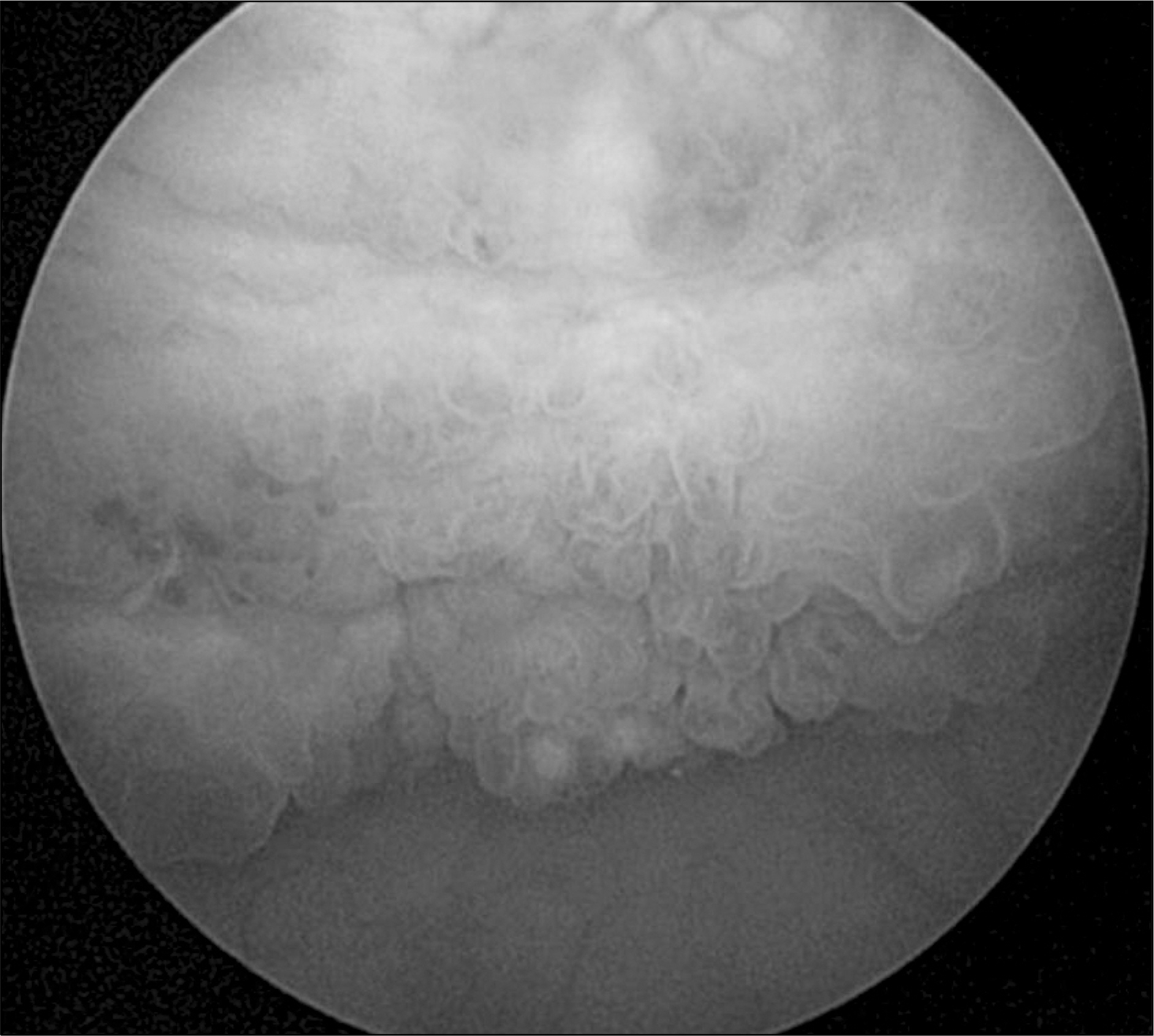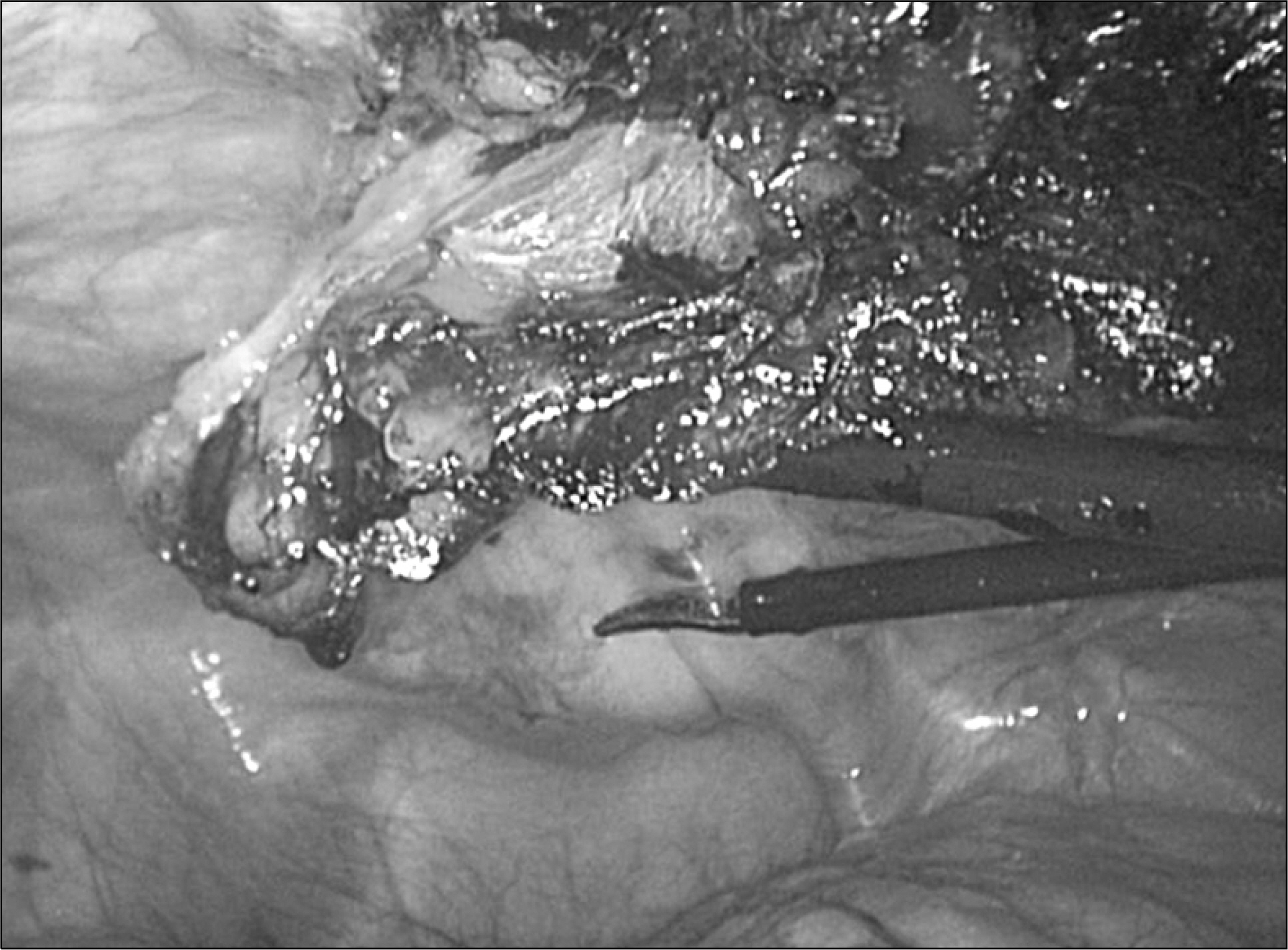Korean J Urol.
2009 Jul;50(7):714-717.
Urachal Xanthogranuloma: Laparoscopic Excision with Minimal Incision
- Affiliations
-
- 1Department of Urology, Ulsan University Hospital, University of Ulsan College of Medicine, Ulsan, Korea. urofirst@uuh.ulsan.kr
- 2Department of Pathology, Ulsan University Hospital, University of Ulsan College of Medicine, Ulsan, Korea.
Abstract
- Urachal xanthogranuloma is an extremely rare disease. A 23-year-old man presented with severe lower abdominal pain and voiding frequency. Computed tomography revealed a urachal mass with bladder invasion, which was suspected to be a urachal carcinoma or abscess. Laparoscopic urachal resection was performed with a minimal incision. Histopathologic examination identified the mass as a urachal xanthogranuloma.
MeSH Terms
Figure
Reference
-
1.Yamamoto T., Mori Y., Katoh Y., Iguchi M., Minamidari K., Sawai Y, et al. A case of urachal xanthogranuloma suspected to be a urachal tumor. Hinyokika Kiyo. 2004. 50:493–5.2.Carrere W., Gutiérrez R., Umbert B., Solé M., Menéndez V., Carretero P. Urachal xanthogranulomatous disease. Br J Urol. 1996. 77:612–3.
Article3.Diaz Candamio MJ., Pombo F., Arnal F., Busto L. Xanthogranulomatous urachitis: CT findings. J Comput Assist Tomogr. 1998. 22:93–5.4.Kuo TL., Cheng C. Xanthogranulomatous Inflammation of urachus mimicking urachal carcinoma. Urology. 2009. 73:443.
Article5.Tian J., Ma JH., Li CL., Xiao ZD. Urachal mass in adults: clinical analysis of 33 cases. Zhonghua Yi Xue Za Zhi. 2008. 88:820–2.6.Navarrete S., Sánchez Ismayel A., Sánchez Salas R., Sánchez R., Navarrete Llopis S. Treatment of urachal anomalies: a minimally invasive surgery technique. JSLS. 2005. 9:422–5.7.Wadhwa P., Kolla SB., Hemal AK. Laparoscopic en bloc partial cystectomy with bilateral pelvic lymphadenectomy for urachal adenocarcinoma. Urology. 2006. 67:837–43.
Article8.Kim DY., Kim HS., Kim IK., Moon I., Kim TS., Choi S, et al. Xanthogranulomatous cystitis presenting as a urachal carcinoma. Korean J Urol. 2004. 45:1180–2.9.Han DH., Choi HJ., Kim JH., Shin JS., Chung KJ., Choi HY, et al. Xanthogranulomatous cystitis. Korean J Urol. 2004. 45:958–61.10.Fornari A., Dambros M., Teloken C., Hartmann AA., Kolling J., Seben R. A case of xanthogranulomatous cystitis. Int Urogy-necol J Pelvic Floor Dysfunct. 2007. 18:1233–5.
Article
- Full Text Links
- Actions
-
Cited
- CITED
-
- Close
- Share
- Similar articles
-
- Laparoscopic Excision of Complicated Urachal Cyst in Child
- Xanthogranulomatous Inflammation of Urachus
- Recurrent Abdominal Wall Inflammation After Resection of Urachal Xanthogranuloma
- Laparoscopic Excision of a Urachal Cyst Containing Large Stones in an Adult
- Laparoscopic Extraperitoneal Resection of Urachal Cyst





